
Rolling Resistance in Haul Truck Operations
A. Soofastaei, L. Adair, S.M. Aminossadati, M.S. Kizil and P. Knights
www.soofastaei.net
Rolling resistance is an important factor in the productivity, cycle times, fuel consumption, maintenance and safety of haul truck operations in surface mines. Responsible for energy losses in materials hauling, an understanding of rolling resistance is desirable so that it can be better managed to improve mining operations. Rolling resistance is defined as a measure of the force required to overcome the retarding effect between the tyres and road [1] and is commonly represented by a rolling resistance coefficient, which can be determined by dividing the rolling resistance by the normal force applied to a truck tyre. Figure 1 presents a schematic diagram of a truck tyre and some of the parameters affecting rolling resistance.
Figure 1: Rolling Resistance and the most Influential Parameters
Study in the area of rolling resistance has potential implications in the area of tyre management in surface mining. Tyre’s remain a large cost in the operation of haul trucks, and are affected by rolling resistance in a number of ways. The build-up of heat in truck tyres is a leading cause of tyre degradation and is influenced by the rolling resistance experienced by the tyre. This accrual of heat can potentially lead to tyre failure, a costly and potentially dangerous event. Rolling resistance is influenced by a number of parameters, all of which can be placed into one of four groups of road, tyre, system and weather. Each of the parameters is also categorized as a Design (D), Construction (C), Operational (O) or Maintenance (M) parameter (Table 1).
Table 1: Influential Parameters on Rolling Resistance
This paper presents the results of research on parameters affecting rolling resistance. The most influential parameters have been determined and their relationships with rolling resistance have been studied.
This research has been conducted by a group of researchers at Mining3 and the University of Queensland Australia.
An online survey was conducted to determine the most influential parameters on rolling resistance, based on the knowledge and experience of a number of professionals within the mining and haul road industries. 50 industry personnel were contacted with a 68% response rate. Of the personnel surveyed, 10% worked in the area of haul road planning, 30% in maintenance, 40% in design and 20% in operations. This survey allowed participants to estimate the influence of parameters identified as affecting rolling resistance. A score was assigned to each parameter between 0 and 100 representing the influence of a particular parameter on rolling resistance, where 0 is not influential and 100 is highly influential. The results of the survey show that tyre diameter has the lowest influence on rolling resistance with a result of 40%. Defects, Tyre Condition, Tyre Temperature, Driver Behavior and Ambient Temperature were all given rankings of approximately 50%. Maintenance, Tyre Pressure and Truck Speed were all identified as having the greatest influence on rolling resistance, with scores between 80 and 90%. The remaining parameters all scored between 50 and 70% (Figure 2).
Figure 2: Survey Results
- Road maintenance refers to the processes undertaken on mine haul roads, to repair defects and other road surface issues. It also refers to processes undertaken to reduce the probability of these defects occurring and increase the general quality of the road surface. The maintenance interval is determined by a number of factors including the mine plan, financial requirements and constraints, personnel availability and the quality/condition of a haul road. For this research, a dataset was obtained for several ramp and bench roads located in a single area of an open surface mine site, using a haul truck to test and obtain data. The data makes use of the maintenance interval or period, which refers to the amount of time between instances of road maintenance work, measured in days. The relationship between maintenance interval and rolling resistance for a specific mine site is illustrated in Figure 3. This figure shows that a larger period of time between maintenance instances results in increased rolling resistance [2].
Figure 3: Rolling Resistance vs. Road Maintenance Interval
- Tyre Pressure is a tyre operational property, identified as being highly influential on rolling resistance. The tyre pressure is easily modified on a mine site and adjusted relatively easy. It should be noted that tyre pressure is not constant during truck operation, and is in fact affected by the temperature of the tyre. This temperature changes during normal truck operation and so affects the tyre pressure during material hauling. In this research all necessary data was obtained from a completed study on tyre pressure in France. The measurement conditions were in accordance with the ISO 8767 standards, which require a temperature of 25 degrees Celsius, tyre loading of 80% of the tyres maximum capacity and a speed of 80km/h. the results show that increasing tyre pressure effects in a decreased rolling resistance coefficient [3]. This corresponds to a decrease in the rolling resistance at higher tyre pressures. The relationship is illustrated in Figure 4.
Figure 4: Rolling Resistance Coefficient vs. Tyre Pressure
- Truck speed falls under a system operational property and refers to the speed at which the haul truck is traveling over the road surface. Truck speed is influenced by a number of different factors including the payload, road conditions, tyre condition, driver behavior and the grade of the haul road. The results illustrated in Figure 5 were obtained for approximately 100 haul truck tyres, tested in The Technical University of Gdansk’s drum facility. They were obtained for two differing drum surfaces, representative of smooth and rough road surfaces. The tyres tested consisted of a number of different brands and geometrical dimensions. The final results show that increasing truck speed results in an increased rolling resistance coefficient [4]. The relationship was found to be the same for both rough and smooth road surfaces, and is illustrated in Figure 5.
Figure 5: Rolling Resistance Coefficient vs Truck Speed
The survey and relationships discussed are useful when considering the efficiency with which haul trucks operate on open surface mines. Rolling resistance can be controlled on mine sites, especially when efforts are focused on the most influential parameters. It is recommended that haul road maintenance intervals be optimised in accordance with cost considerations to reduce rolling resistance. In relation to tyre pressure, it is clear that higher pressures result in lower rolling resistance. It is therefore recommended that tyre pressures be maintained in accordance with the manufacturer’s recommendations. Lastly, increasing truck speed is linked to higher rolling resistance, and so lower truck speeds are desirable when only rolling resistance is considered. However, a number of other factors must be considered when choosing a suitable truck speed including safety requirements, cycle times and productivity requirements. All of these alterations will reduce rolling resistance, and be useful when considering further hauling operations and their efficiency.
In addition to potential improvements in rolling resistance, this study aimed to identify opportunities to improve haul truck fuel efficiency. Rolling resistance is a major contributor to energy loss in hauling operations and is affected by numerous parameters. By identifying which of these parameters are the most influential on rolling resistance, the mining industry can focus its efforts on a smaller area of fuel efficiency improvements. Further work in this area, particularly in the area of the relationship between rolling resistance and fuel efficiency is recommended.
References
[1]AusIMM, Cost Estimation Handbook. 2012, Australasian Institute of Mining and Metallurgy, Australia.
[2]Roger J Thompson, Alex T Visser, The impact of Rolling Resistance on Fuel, Speed and Costs. 2006, University of Pretoria, South Africa.
[3] Data Obtained From – Michelin, C.T., the Tyre Rolling Resistance and Fuel Savings.2003, Society of Technology Michelin, France.
[4] Data Obtained From- Sandberg, I., Rolling Resistance – Basic Information and State-of the-Art on Measurement Methods. 2011, Miriam, Sweden.

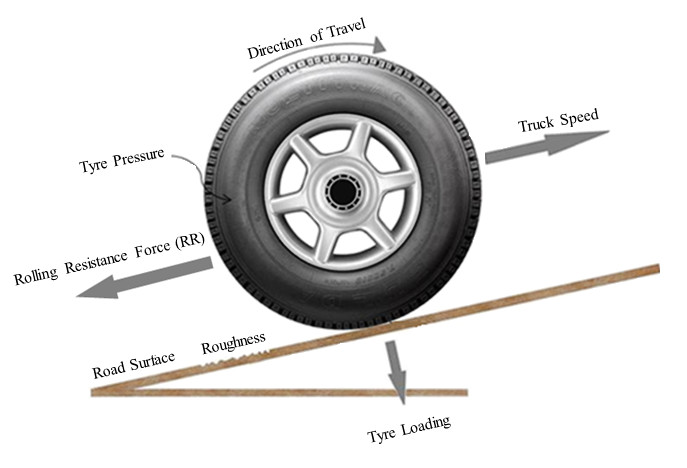
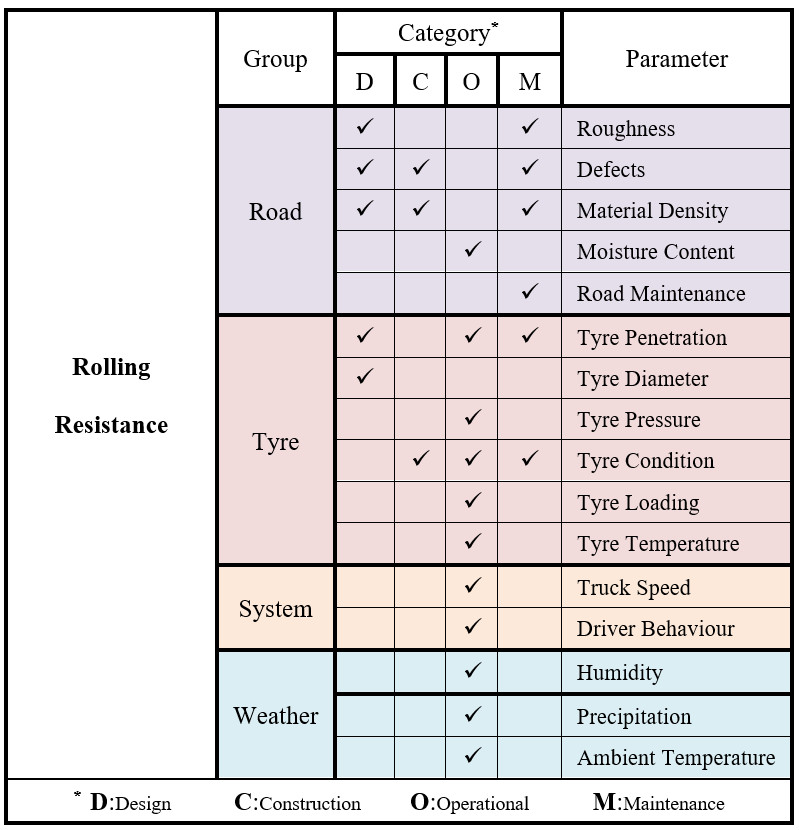
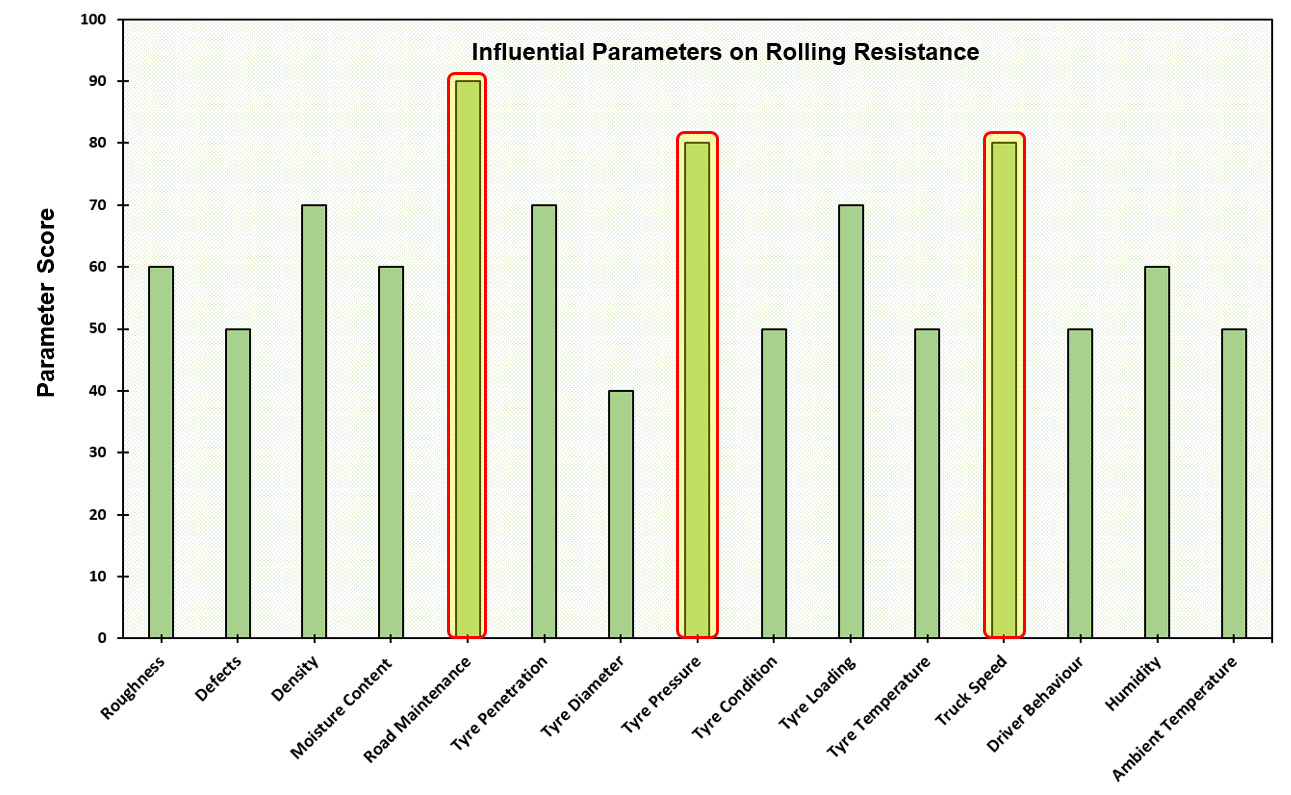
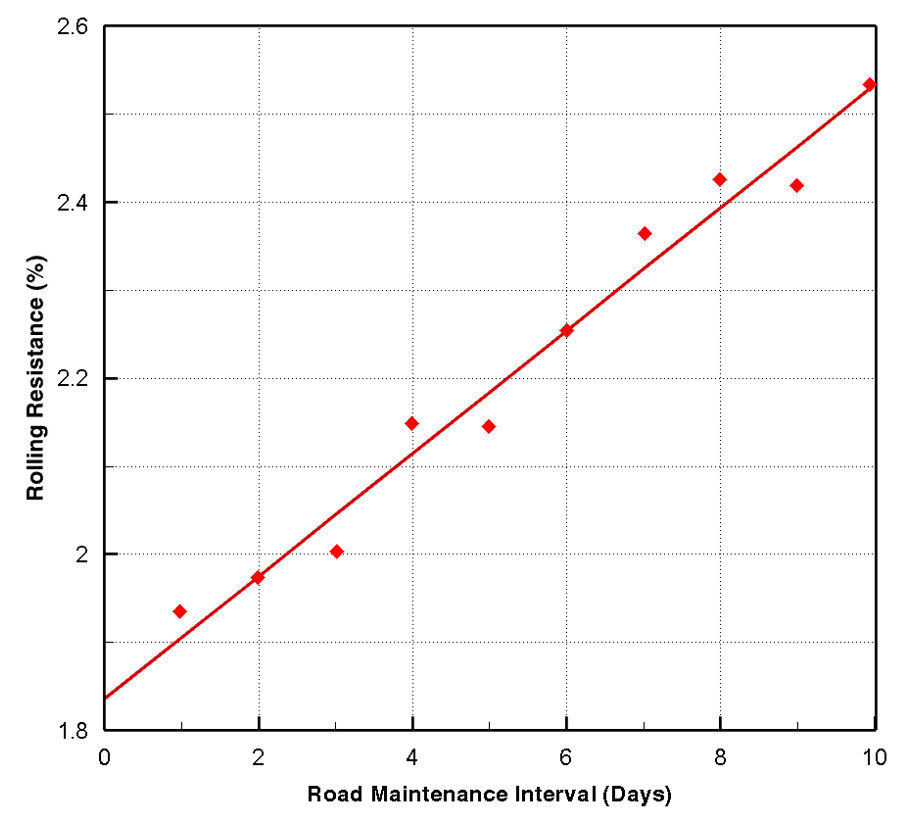
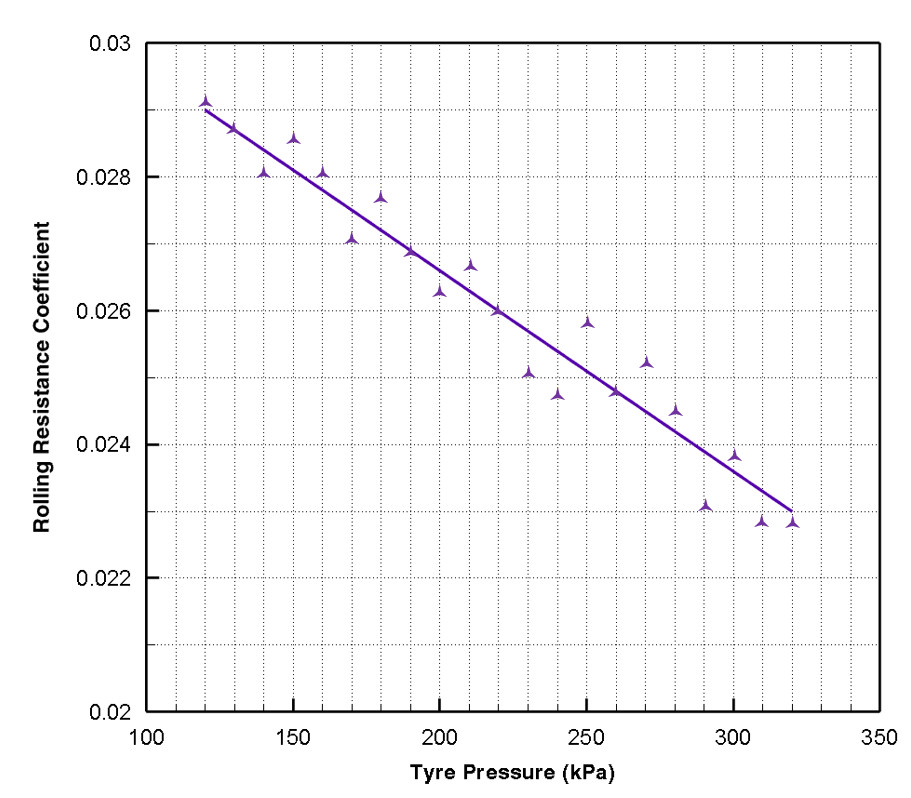
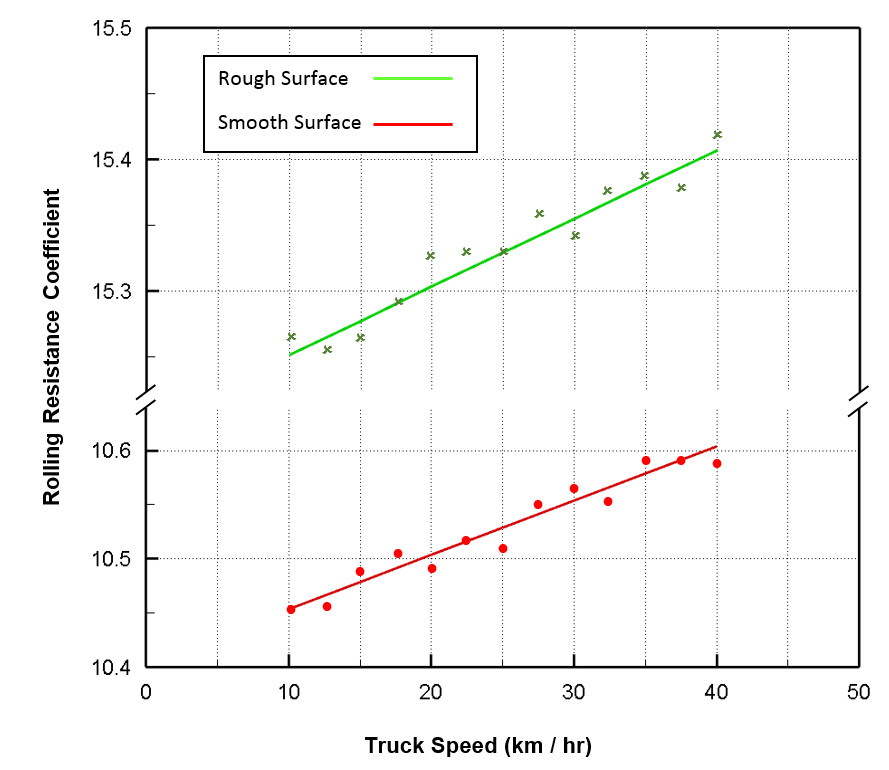






Responses